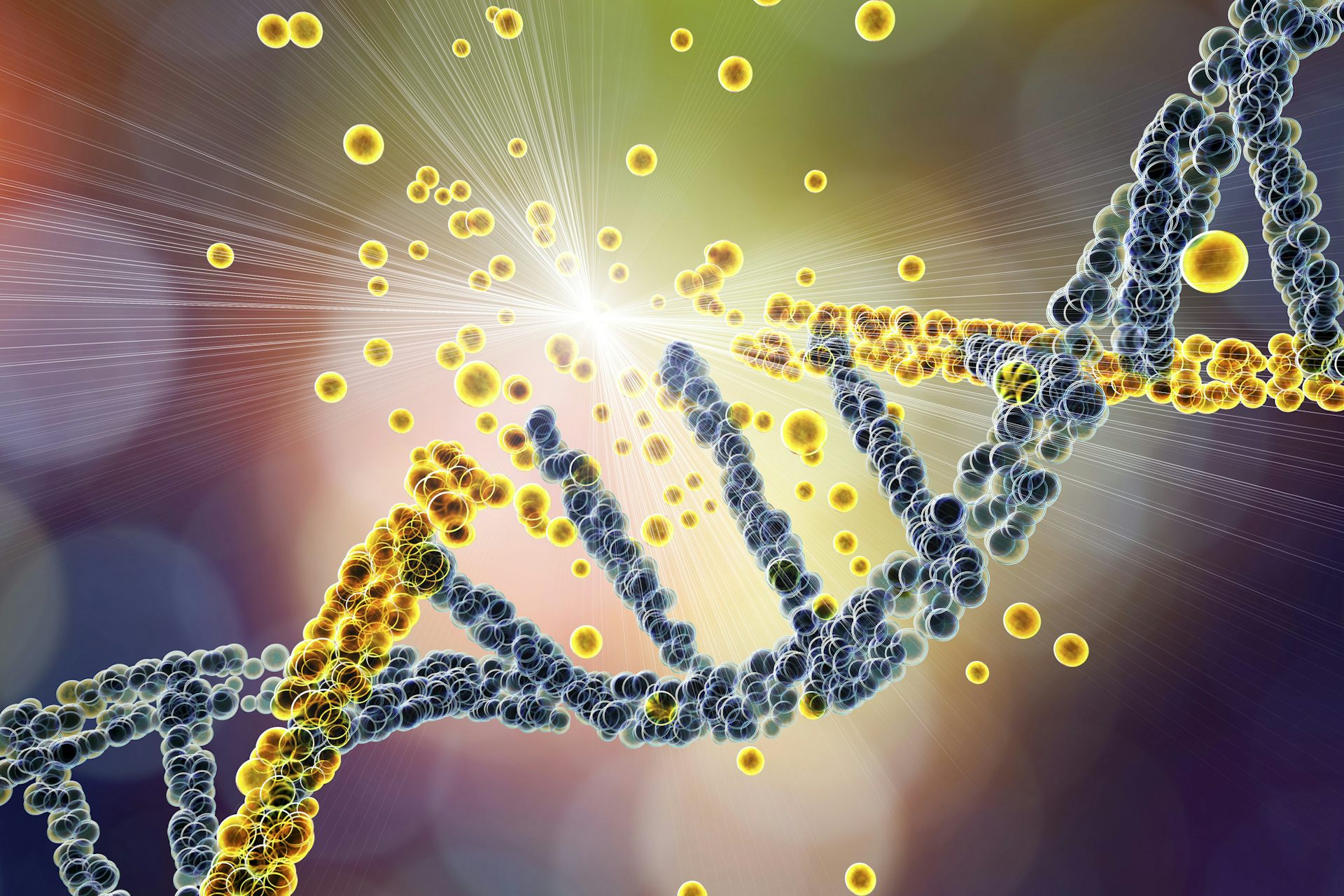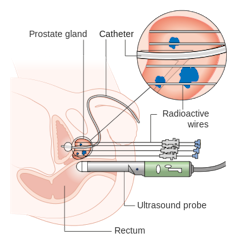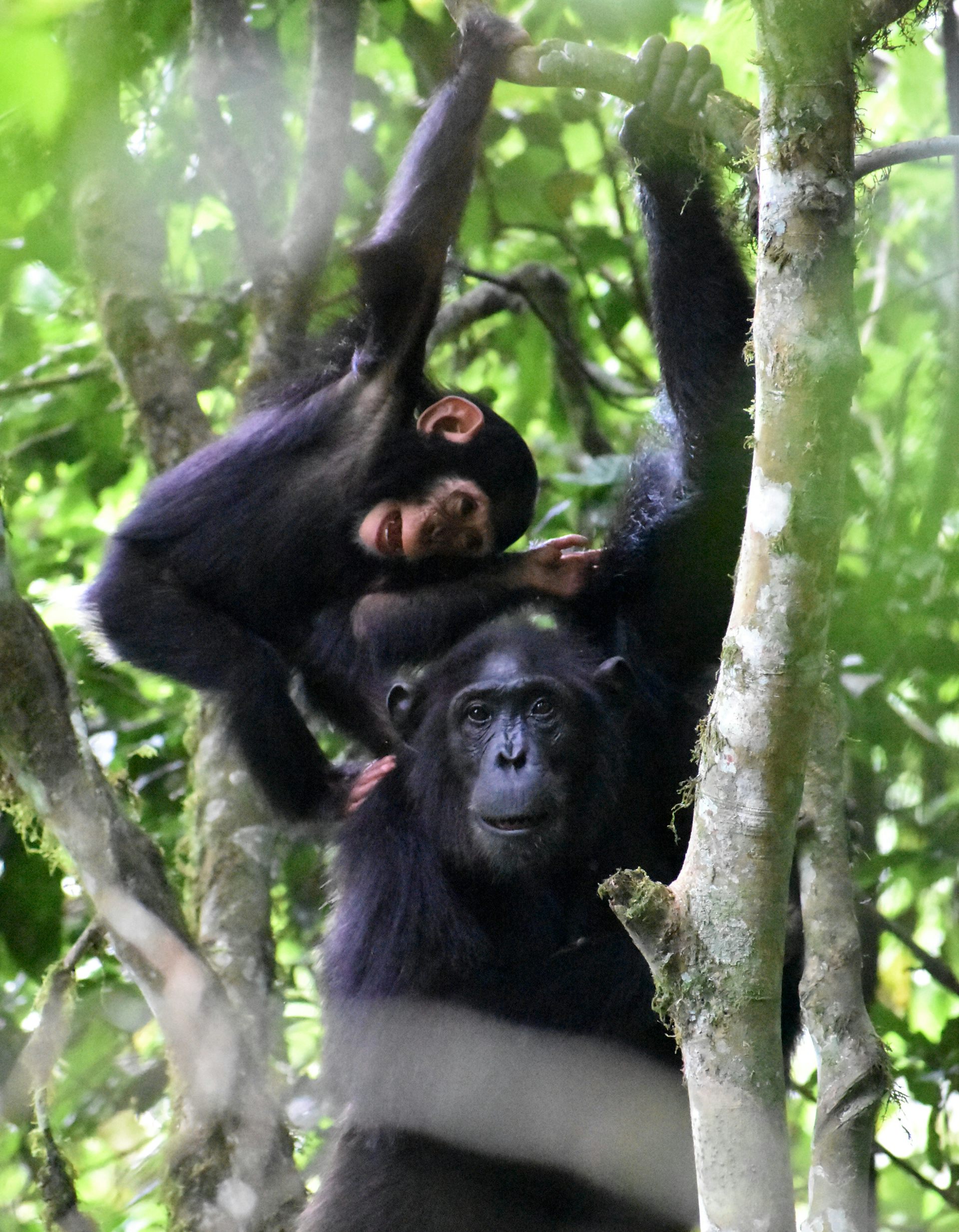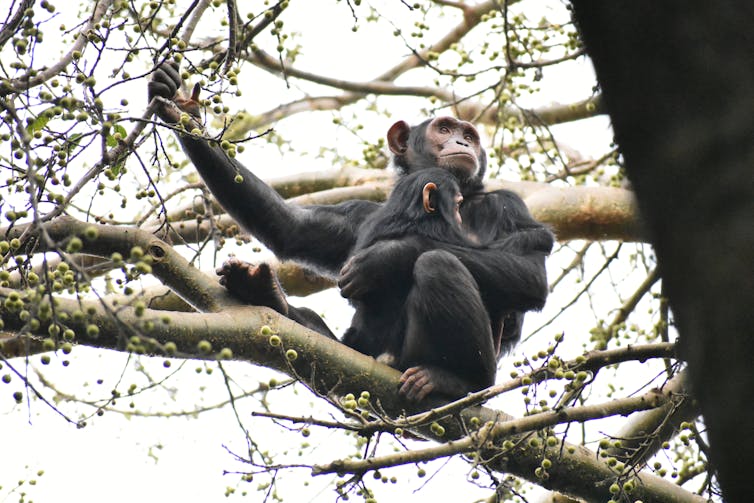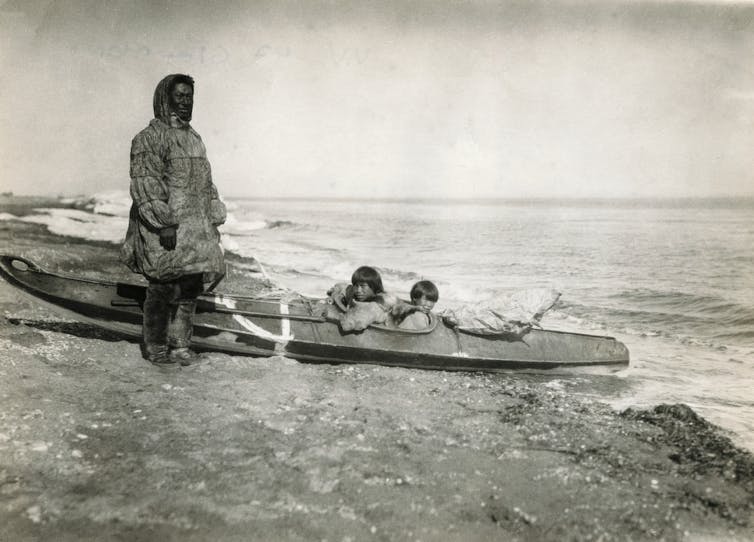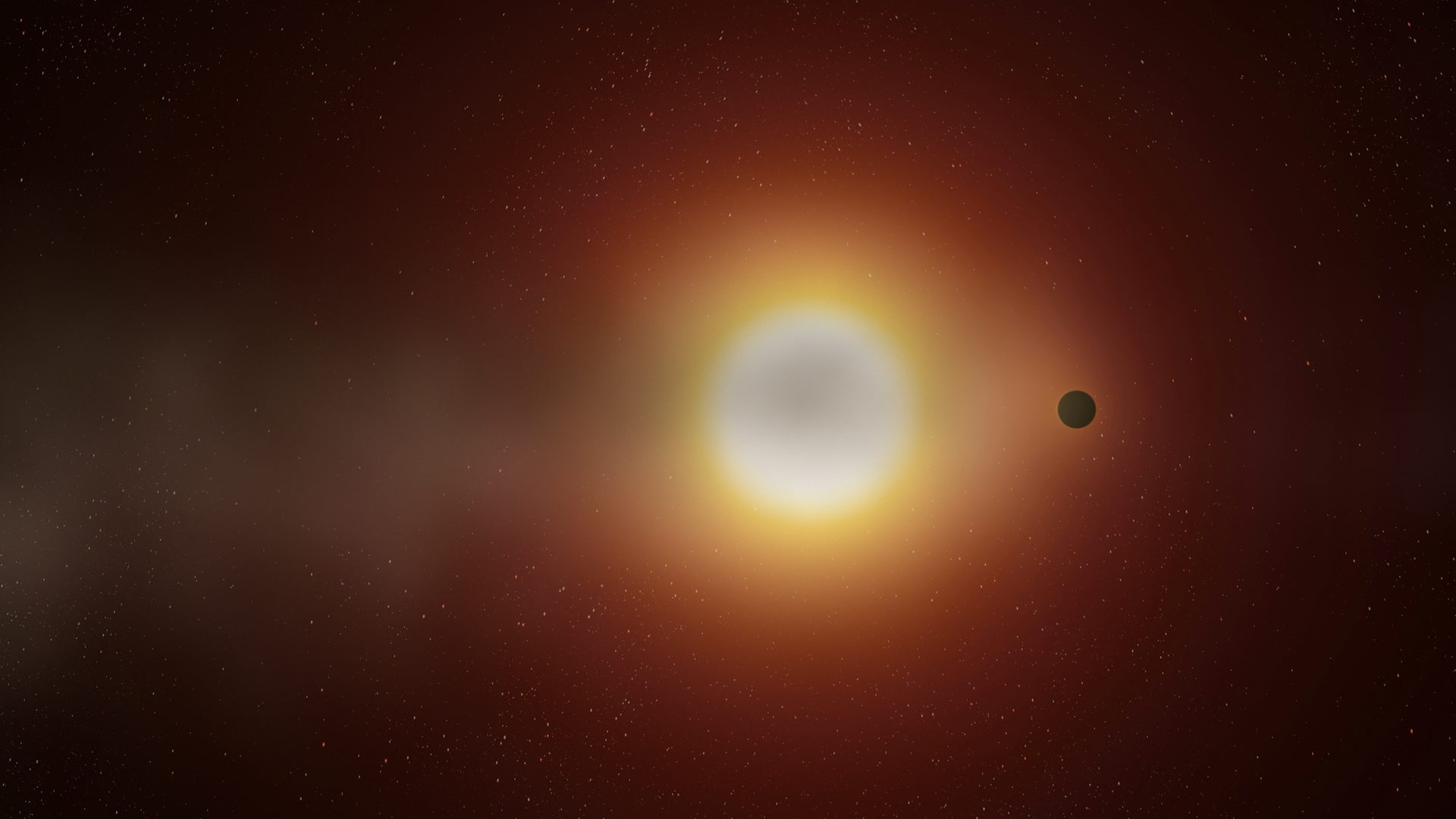Chimp mothers take on the critical role of playmate with their young.
Kris Sabbi
Zarin Machanda, Tufts University and Kris Sabbi, Harvard University
Wild chimpanzees have been studied for more than 60 years, but they continue to delight and surprise observers, as we found during the summer of 2017 in Kibale National Park in Uganda.
We were observing young chimpanzees' play to better understand how they grow up. For most group-living animals, play is an integral component of development. Beyond just having fun, social play allows them to practice critical physical and social skills they will need later in life.
But that summer, we realized that it wasn't just the young ones playing. Adults were joining in on play more often than we had seen before, especially with each other. Watching fully grown female chimpanzees tickling each other and laughing surprised even the most veteran researchers of our project.
What made this so unusual was not that adult chimpanzees were playing at all, but that they were doing it so frequently. A behavior that we typically might see once every week or two became something that we saw every day and sometimes lasted for hours.
So what had changed that summer? For us, as primatologists, this is where the fun began.
Why would adults play in the first place?
Scientists tend to think the main reason play declines with age is that individuals essentially grow out of it as they master motor and social skills and shift toward more adult behaviors. By this logic, adults only rarely play because they no longer need to. The situation is different for domesticated species like dogs because the process of domestication itself preserves juvenile behaviors like playfulness into adulthood.
Neither of these reasons would explain why our adult chimpanzees were shoving babies out of the way to play with each other that summer. Instead of asking why adults would play, we had to ask what might, in other circumstances, stop them from playing. And for this, we had to go back to the basics of primatology and consider the effects of food on behavior.
The summer of 2017 was notable because there was an unusually high seasonal peak of a lipstick-red fruit called Uvariopsis, a favorite and calorie-rich chimpanzee food. During the months when these fruits are ripe and plentiful, chimpanzees spend more time hanging out together in larger groups.
This sort of energy surplus has been linked to rigorous activities, such as hunting among monkeys. We wondered whether fruit abundance might be linked to social play as well. Perhaps adult play is constrained because grown chimpanzees just don't usually have the extra time and energy to devote to it.
Gathering enough food to eat is a critical daily task.
Kris Sabbi
When life gets in the way of play
To test this idea, we turned to the long-term records of the Kibale Chimpanzee Project, extracting nearly 4,000 observations of adult play over 10 years.
Whether tussling with a young chimpanzee or playing chase with another adult, the frequency of adult play was strongly correlated with the amount of ripe fruit in the diet in any given month. When the forest was full of high-quality food, adult chimpanzees played a lot.
But when their prized fruits dwindled, their playful sides all but disappeared – that is, except for mothers.
A surprising sex difference
Among chimpanzees, males are much more social than females. Males invest a lot of time developing friendships, and, in turn, they reap the rewards of those bonds: higher dominance rank and more sex. For females, the high energetic costs of pregnancy and lactation mean socializing comes at the cost of sharing food that they need for themselves and their offspring.
We expected that play, as a social behavior, would follow other social patterns, with males playing more and being able to afford to play even when food abundance was low. To our surprise, we found the opposite. Females played more, especially during months with less fruit – because mothers kept playing with their babies even when all other chimpanzees had stopped.
A hidden cost of motherhood
Chimpanzees live in multimale, multifemale societies that exhibit what researchers call fission-fusion. In other words, the whole social group is rarely, if ever, all together. Instead, chimpanzees break up into temporary subgroups called parties that individuals move among throughout the day.
When food is scarce, parties tend to be smaller, and mothers are often alone with just their young. This strategy reduces feeding competition with group mates. But it also leaves mothers as the only social partners for their offspring. Mothers' time and energy that might be devoted toward other daily tasks, such as feeding and rest, go toward play instead.
Not only did our study reveal this previously unknown cost of motherhood, but it also highlighted how important play must be for these young chimpanzees that their mothers accept this cost.
You might be curious about how chimpanzee fathers fit in here. Chimpanzees mate promiscuously, so males do not know which offspring are theirs. Mothers are left to bear the costs of parenthood on their own.
An ape connection
Child development researchers know that play, and especially play with parents, is critically important for human social development. In fact, caregivers of young children might be reading this in between bouts of play with their little ones right now.
Since chimpanzees are one of our closest living relatives, these kinds of behavioral similarities between our species are not uncommon.
But not all primate parents reckon with costly play. In fact, there are almost no records of monkey mothers playing with their babies at all. Most other primate species, such as baboons and capuchins, don't go their separate ways during the day, so babies can play with each other and moms can catch a break.
Whether maternal play is a product of fission-fusion grouping or the developmental needs of offspring still needs to be tested directly. But the responsibility to play with your little ones certainly resonates with many human parents who experienced a sudden shift to become their children's main play partners when COVID-19 interrupted normal activities.
So on this Mother's Day, consider raising a glass to also celebrate these amazing – and tired – chimpanzee moms.
Zarin Machanda, Assistant Professor of Anthropology and Biology, Tufts University and Kris Sabbi, Fellow in Human Evolutionary Biology, Harvard University
This article is republished from The Conversation under a Creative Commons license. Read the original article.
